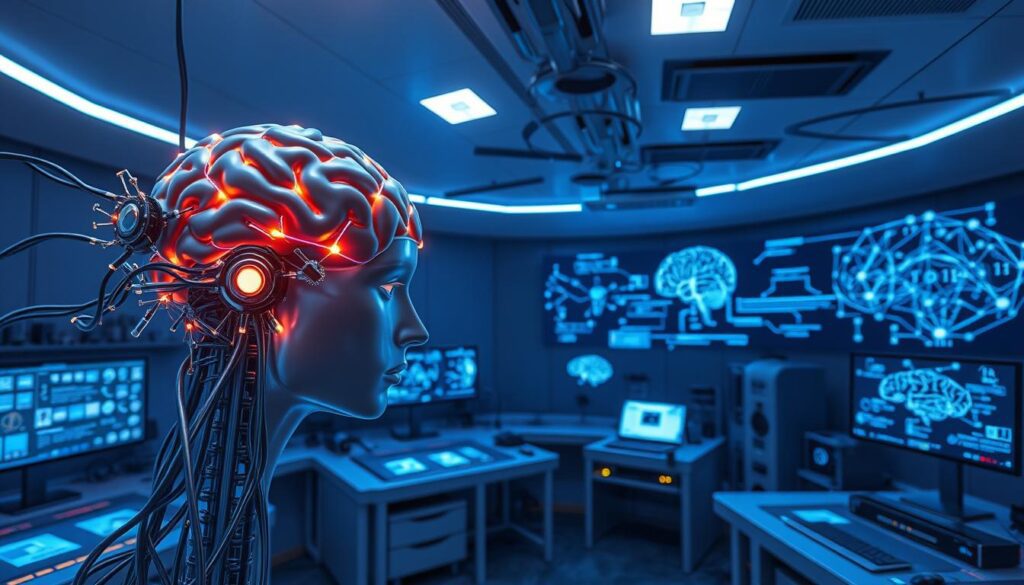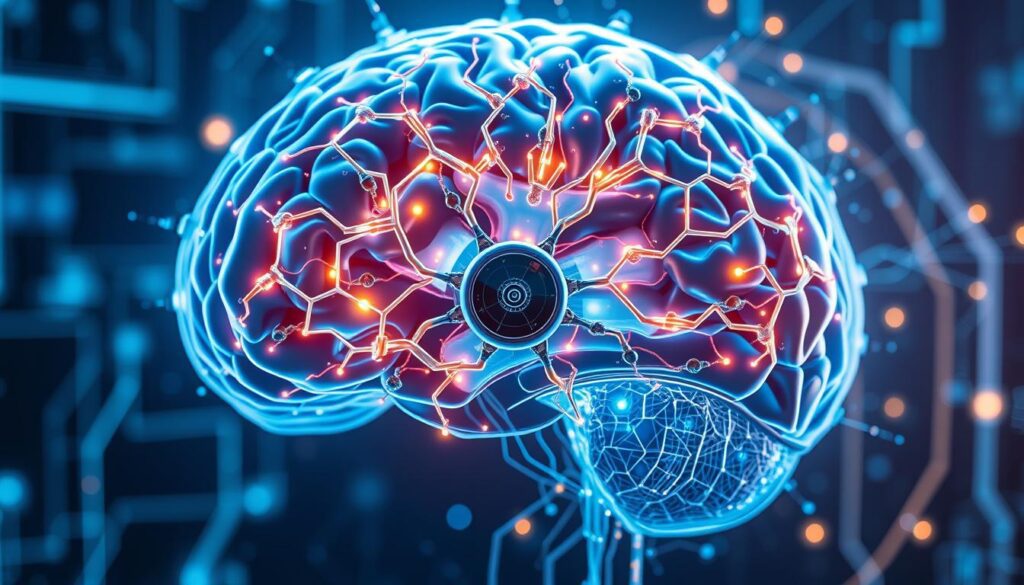Cognitive Enhancement: Neuralink, founded by Elon Musk, is changing how we use technology and tap into our minds. They’re working on brain-computer interfaces to link our brains with computers. This could lead to huge improvements in how we think and do things.

Key Takeaways
- Neuralink’s pioneering work in brain-computer interfaces aims to integrate the human brain with advanced computing systems.
- The company’s goal is to enable unprecedented cognitive enhancement and the expansion of human capabilities.
- Neuralink’s ambitious quest is at the forefront of the emerging field of neurotechnology and human-machine integration.
- The company’s innovations have the potential to revolutionize how we interact with technology and unlock the full potential of the human mind.
- Neuralink’s work raises important ethical considerations regarding the future of human enhancement and the implications of blurring the boundaries between human and machine.
Neuralink’s Quest to Unleash the Power of the Mind
Elon Musk founded Neuralink with a big dream of cognitive enhancement. They aim to make a brain-computer interface that connects directly to the brain. This would let people control devices with just their thoughts.
Exploring the Boundaries of Human-Machine Interfaces
Neuralink’s work could change how we see and interact with the world. These neural implants could boost our brain power, help with health issues, and maybe even let us think differently. This could start a new chapter in human augmentation and transhumanism.
Ethical Considerations and Potential Implications
But Neuralink’s work also brings up big questions. Mixing tech with our brains could change our privacy, identity, and what makes us human. As Neuralink advances, they must think about the ethics and how their tech affects society.
“The work Neuralink is doing is not just about upgrading human abilities, but about redefining the boundaries of human consciousness and identity.”
Decoding the Brain: Neuralink’s Groundbreaking Approach
Neuralink is leading the way in neurotechnology. They aim to make a strong link between the brain and computers. They use neural recording and neural stimulation to make this connection.
Leveraging Cutting-Edge Neurotechnology
Neuralink uses tiny electrodes to watch and change brain activity. These electrodes send brain signals to devices without wires. This lets people control devices with their minds.
Their neural implants are tiny and flexible. They can be put into the brain without harming it. This tech could change how we think and even help people who lost senses or movement.
Overcoming Technological Challenges
Neuralink has big goals but faces tough technological challenges. They need to make the tech smaller, more stable, and better at understanding brain signals.
But Neuralink’s team is not giving up. They believe their neurotechnology can change how we see and improve cognitive enhancement.

The Promise of Enhanced Cognition: Possibilities and Potential
Neuralink is changing the game with its brain-computer interfaces. This tech could open new doors in making our minds work better. It aims to link our brains with computers smoothly, letting us tap into our full mental potential.
This could lead to better treatments for brain disorders and boost our skills and creativity. The tech’s impact is huge and thrilling.
Neuralink’s work could change how we handle brain issues, offering precise and effective treatments. It connects directly with the brain, giving us deep insights into how it works. This could lead to big steps forward in treating many brain and mental health problems.
It could greatly improve life for those affected, bringing new hope and ways to get better.
But Neuralink’s tech isn’t just for health. It could also make us smarter, unlocking new levels of creativity and problem-solving. This could change the game in art, science, and personal growth. People could use their brains more effectively to achieve amazing things.
